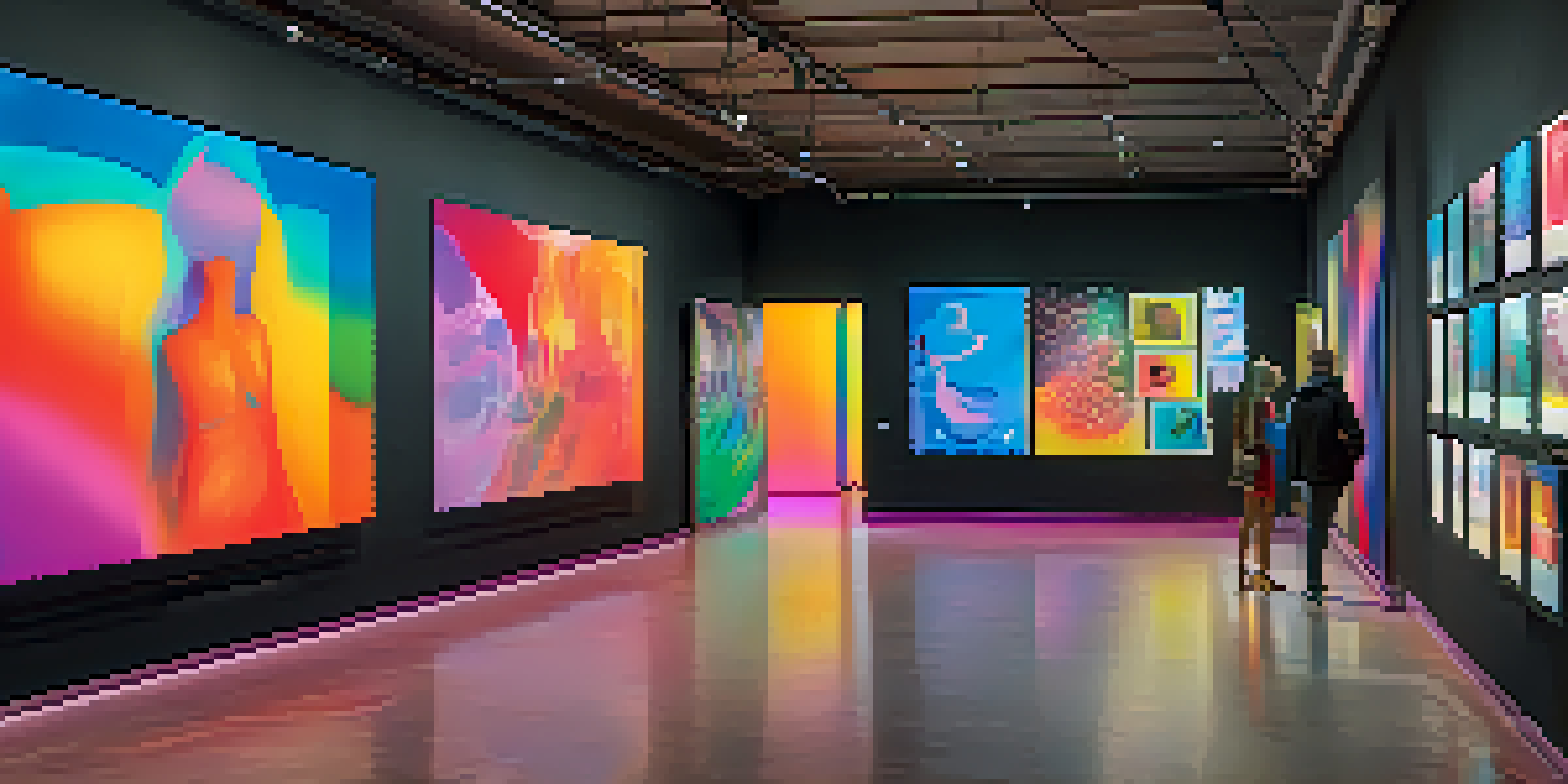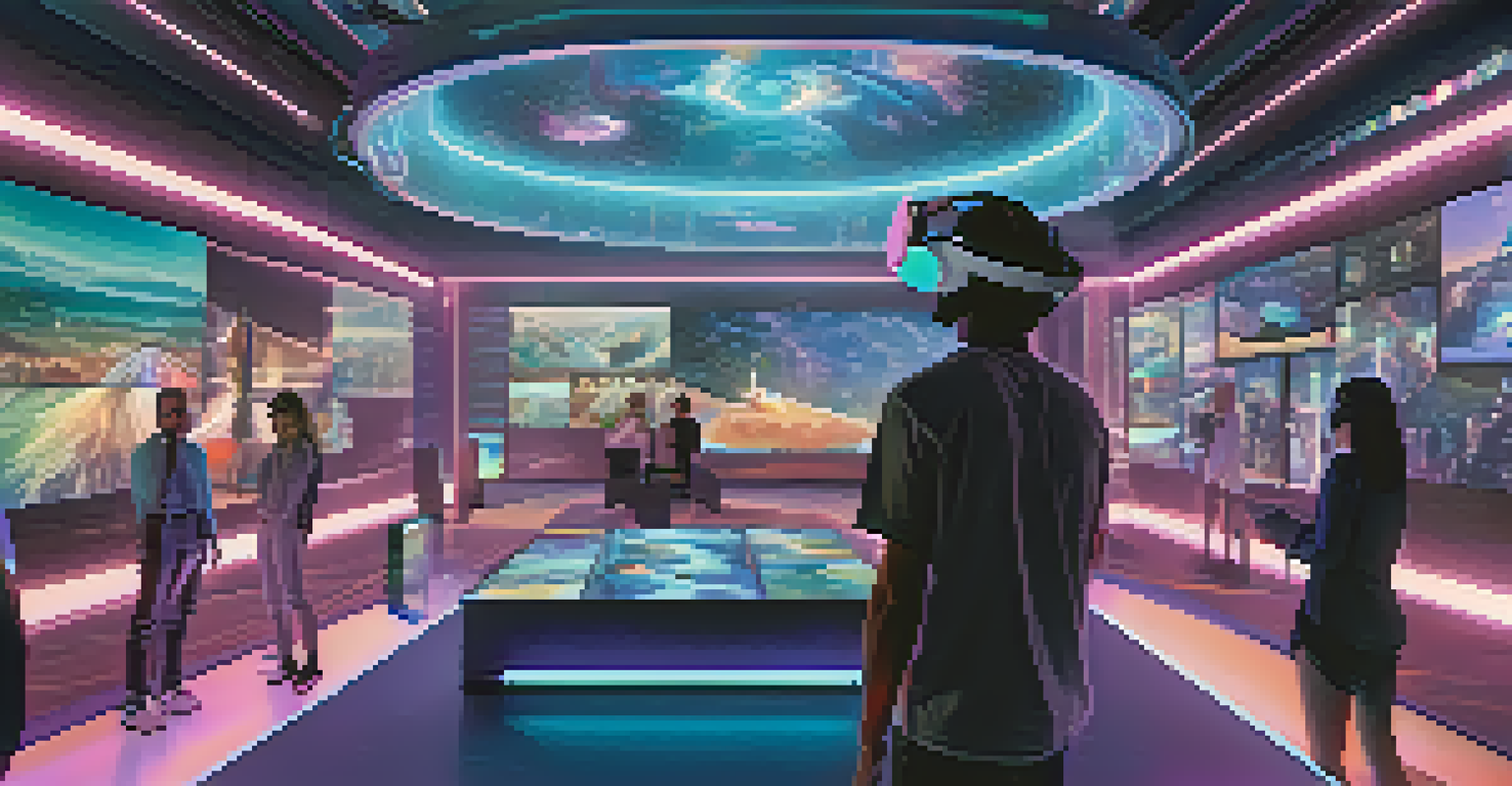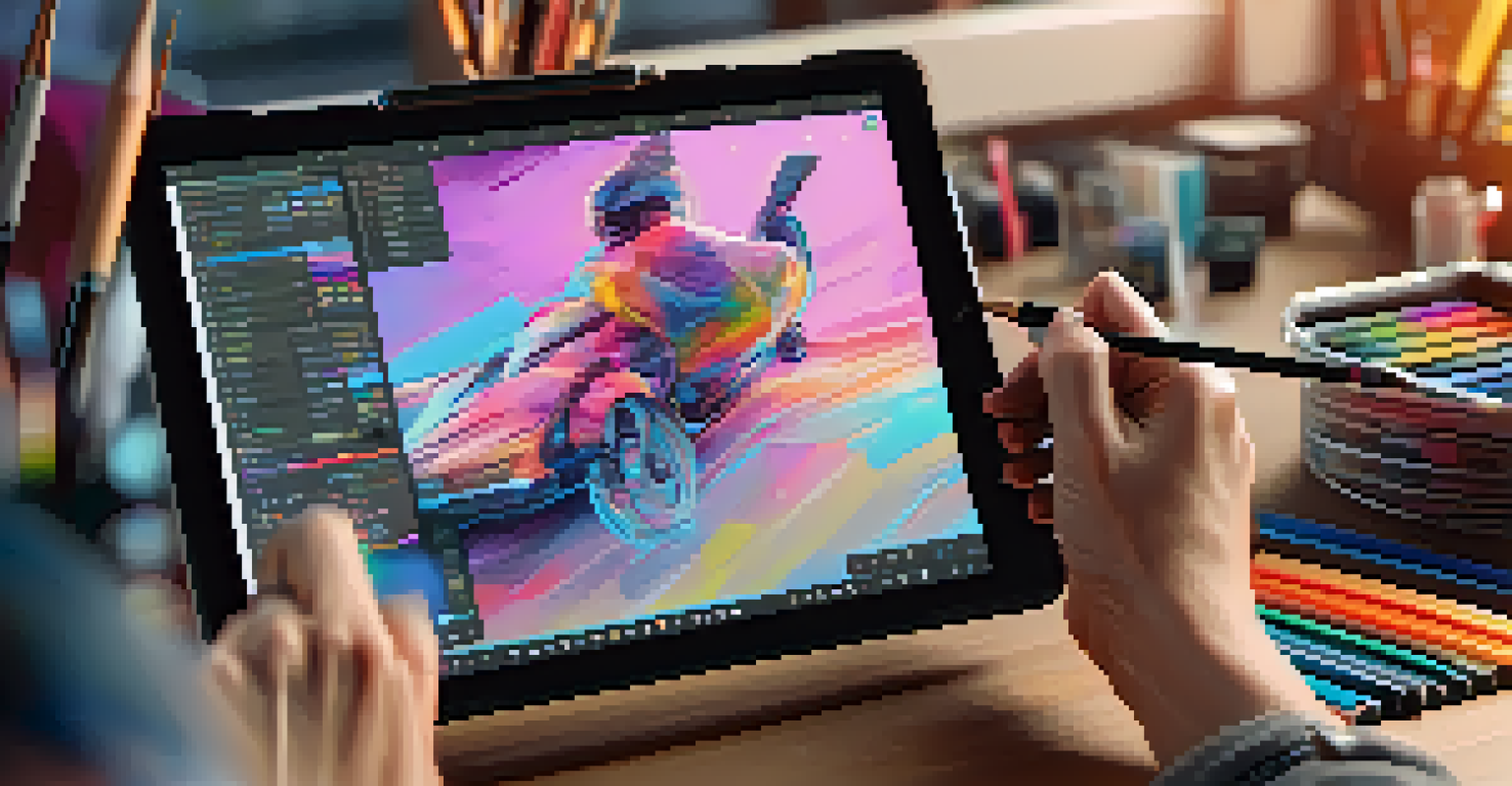NFT Marketplaces and Gamification: Enhancing User Interaction

Understanding NFT Marketplaces and Their Appeal
NFT marketplaces are platforms where users can buy, sell, and trade non-fungible tokens. These tokens are unique digital assets that represent ownership of items such as art, music, or collectibles. The appeal of NFT marketplaces lies in their ability to give creators and collectors a space to showcase and monetize digital creations in a way that was previously impossible.
In a digital world, the way we create and share our art is forever changed by technology, and NFTs are at the forefront of this revolution.
With the rise of blockchain technology, these marketplaces have transformed the art and gaming industries. They allow for transparent transactions and verifiable ownership, which fosters trust between buyers and sellers. This innovation has opened the door for artists to reach global audiences, turning what was once a niche market into a mainstream phenomenon.
However, the competitive nature of these platforms means that user engagement is crucial. As more users flock to NFT marketplaces, finding ways to enhance interaction becomes essential for retaining customers and encouraging new users to dive in.
The Role of Gamification in User Engagement
Gamification involves incorporating game-like elements into non-game contexts to boost user interaction and motivation. In the realm of NFT marketplaces, this can mean adding features like rewards, badges, and challenges that make the experience more enjoyable. When users feel a sense of achievement, they are more likely to return and engage further.

For instance, some marketplaces offer loyalty points for transactions that can be redeemed for exclusive NFTs or discounts. This not only incentivizes users to participate more actively but also fosters a community spirit. When users feel they are part of something bigger, they're likely to invest more time and resources into the platform.
NFT Marketplaces Drive Engagement
NFT marketplaces offer unique platforms for buying, selling, and trading digital assets while fostering user interaction through innovative features.
Moreover, gamification can help demystify the NFT process for newcomers. By introducing fun and interactive tutorials, users can learn about NFTs, how to trade them, and the significance of blockchain technology without feeling overwhelmed.
Creating Engaging Experiences Through Challenges
Challenges are another effective gamification strategy used by NFT marketplaces. By presenting users with tasks—such as collecting specific NFTs or completing trades—marketplaces can create a sense of urgency and excitement. This not only keeps users on the platform longer but also encourages them to explore different features and offerings.
Gamification is not just a trend; it’s a powerful tool to engage users and create communities around shared interests.
For example, a marketplace might run a limited-time challenge where users earn exclusive NFTs for completing certain actions. This creates a buzz and encourages participation, as users are motivated to act quickly before the opportunity passes. Such initiatives not only enhance user interaction but also drive sales and trading activity.
Incorporating these challenges helps market participants feel a sense of progress and achievement. As they complete tasks, they see tangible rewards, further motivating them to remain engaged and check back regularly for new challenges.
Building Community through Competitive Leaderboards
Leaderboards are a popular gamification tool that fosters a sense of competition among users. By displaying top performers based on transaction volume or challenge completions, marketplaces can motivate users to strive for higher rankings. This not only enhances user interaction but also builds community as users share strategies and tips to climb the leaderboard.
For instance, a marketplace might reward the top three users with exclusive NFTs or early access to new drops. This not only makes users feel valued but also encourages others to engage more deeply with the platform in hopes of earning similar recognition. In many ways, leaderboards can turn casual users into dedicated participants.
Gamification Enhances User Experience
Incorporating game-like elements such as challenges, rewards, and leaderboards helps boost user motivation and retention in NFT marketplaces.
Moreover, community engagement through leaderboards can result in organic growth. As users share their achievements on social media, they attract new users to the platform, thus expanding the marketplace's reach and influence.
Incorporating Storytelling in User Journeys
Storytelling is a powerful tool that can enhance user interaction in NFT marketplaces. By creating narratives around NFTs or the creators behind them, platforms can forge emotional connections with users. This sense of investment can lead to increased loyalty and engagement as users feel more involved in the journey of the assets they purchase or trade.
For example, a marketplace might feature the backstory of an artist or the inspiration behind a particular NFT. When users understand the context and meaning behind their purchases, they are more likely to value and share the experience with others. Storytelling creates a richer user experience, transforming a simple transaction into a memorable moment.
Furthermore, integrating storytelling elements into challenges can amplify engagement. Users might be tasked with completing a quest that unfolds a narrative, making their interactions feel more like an adventurous journey rather than mundane tasks.
Leveraging Social Features to Enhance Interaction
Social features are instrumental in boosting user engagement on NFT marketplaces. By allowing users to follow each other, comment on listings, and share their collections, platforms can create a vibrant community atmosphere. This sense of belonging can motivate users to return and interact more frequently with the marketplace.
For example, enabling users to showcase their NFT collections on personal profiles encourages sharing and interaction. Users can comment, like, or even trade directly with others, fostering connections and collaborations. This social aspect makes the experience more enjoyable and less transactional.
Community Building is Essential
Social features and storytelling play a crucial role in creating a vibrant community, enhancing user loyalty and engagement within NFT platforms.
Moreover, organizing community events, such as virtual meetups or collaborations with creators, can further enhance engagement. These initiatives create opportunities for users to connect with like-minded individuals, turning casual participants into active community members.
The Future of NFT Marketplaces and Gamification Trends
As the NFT space continues to evolve, the integration of gamification will likely become even more sophisticated. Emerging technologies, such as augmented reality (AR) and virtual reality (VR), are poised to take user interaction to new heights. Imagine exploring a virtual gallery filled with NFTs or participating in immersive gaming experiences that bridge the gap between art and play.
Moreover, as more creators enter the NFT space, the need for innovative engagement strategies will grow. Marketplaces will have to continuously adapt and find new ways to captivate users, ensuring that they remain relevant and competitive. This might include personalized experiences tailored to individual user preferences and behaviors.

Ultimately, the fusion of NFT marketplaces and gamification presents exciting possibilities. As platforms strive to enhance user interaction, we can expect a dynamic landscape that not only supports creators but also fosters a thriving community of engaged users.